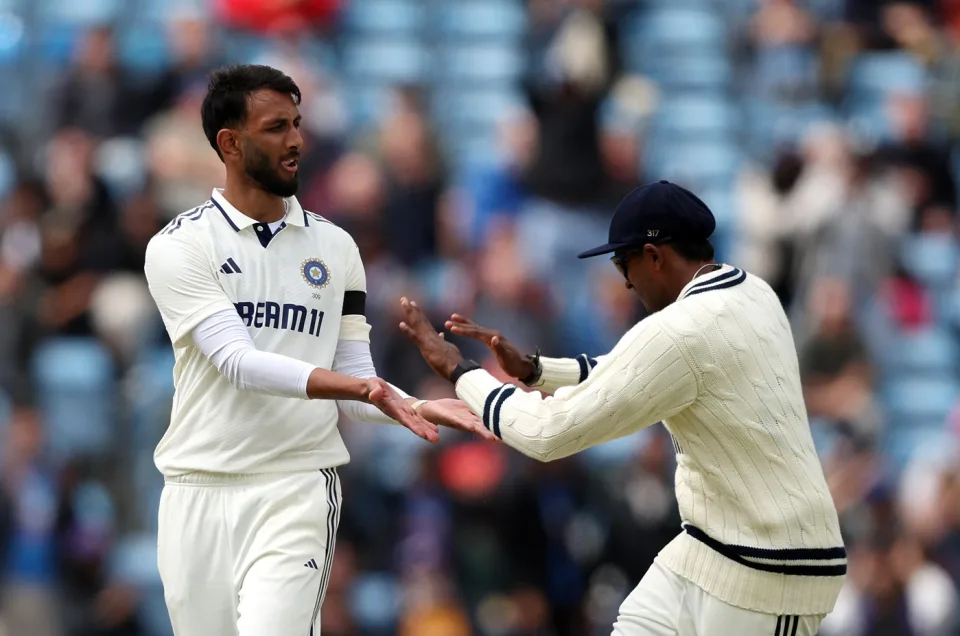
Prasidh eager to make amends after falling short in the 1st Test as he kept bowling short to his own detriment.
Prasidh fell short by going short but is eager to make amends.
Prasidh Krishna made Test cricket history at Headingley by becoming the first bowler to bowl at a rate of more than one run per ball in both innings (minimum of 15 overs bowled in each innings). Additionally, he recorded the best match economy of any Test bowler for India. It helped make India the first first-class cricket team to lose after hitting five hundreds in the game.
It’s easy to understand why Prasidh didn’t achieve the expected outcomes in Leeds. He bowled one in five deliveries, or just 24 balls, in the 6–8 m good length range in the first innings. Half of the deliveries made by Mohammed Siraj and Jasprit Bumrah were of a respectable length. When he pitched there, his economy was 3.75.
He continued to stray into short of a good length instead, hitting 17 balls in the 10–12 m zone for 34 runs and no wicket and 51 balls in the 8–10 m band for 53 runs and a wicket. As a defensive tactic with defensive fields, the first of these is just the limited-overs hard length. It simply got pummelling at Headingley. The latter is not a short ball as you intend. It was not nearly shoulder-high. Prasidh got two wickets of set hitters in 11 balls when he found the right bouncer in the 12–14 m zone.
Has the tools to succeed
You know Prasidh has what it takes to be a Test bowler, so it was tough to see. Among the bowlers from India, he possesses the highest release, which gives him the best opportunity to create unsettling bounce and seam movement. He is not fast, but with accuracy, he can reach an average speed of 136.54 kph. At one point, he did accelerate it to 147.46 kph.
In the second innings, Prasidh improved, bowling half of his deliveries in the 6–8 m range for one wicket and an economy rate of 4.93. Although the pitch was no longer as good as it had been in the earlier innings, he still had a more menacing appearance. Prasidh still needs to figure out how to stop giving up so many runs.
In the nets, it was evident that Prasidh and bowling coach Morne Morkel were trying to make the default length a little bit fuller without actually floating the ball up. Up until he worked with Jason Gillespie at Sussex, towering fast bowler Ishant Sharma experienced similar problems. Gillespie forced him to abandon the custom of striking the pitch’s cones. He instructed Ishant to try hitting the knee roll as hard as he could on the hitters’ pads while forgetting the pitch. It’s something Prasidh might consider doing.
Can he deliver ?
Soon after the Headingley loss, coach Gautam Gambhir gave Prasidh his full backing. Despite pointing out his inexperience, he claimed to have all the necessary skills to succeed as a Test bowler. Bazball pitches will stay flat, Bazballers will keep attempting to crush him, and he won’t even have Jasprit Bumrah for two of the remaining Test matches, so the task won’t get any easier. Prasidh must now figure out how to hit those nice lengths without letting the ball float. From then, the rest can only follow.

